From Design to Testing: The 10 Best iOS App Development Tools

What comes to mind when you hear “iOS app development”?
Perhaps you’re thinking about the best tools for programming iOS apps. But too much focus on programming software might hinder you from making the best use of your time and money as you seek to create your own iOS app.
If you desire long-term success for your iOS application, you need a whole suite of tools, from design to mobile app testing. Finding the right iOS app design, development, and testing tools helps you optimize the use of your resources and better benefit from an app market worth around $300 billion as of 2023.
Our iOS development experts have curated a comprehensive list of the best iOS app development tools. Read this article to learn more about these tools, as well as related design and testing software. You will also discover some digital services for enhancing iOS app functionalities.
How a full suite of iOS app development tools ensures long-term success
At Appetiser Apps, we use a variety of design, programming, and testing tools to help our partners get the best out of their iOS apps.
As you will soon find out, design tools help you increase your chances of getting funding for your iOS app development, while testing software ensures the marketability of your app.
The importance of iOS app design tools
Tools for designing mobile apps for Apple enable you to create prototypes that have the visual look and feel of your iOS app without the functionalities. These prototypes have been successfully used to help convince investors to pour their money on app development projects.
Case in point, Vello.
This social media startup was able to attract funding worth around $600,000 to help pay for its app development costs. Check out the Vello case study to learn how it used our prototype to build a reimagined channel for connecting fans and celebrities.

The extra funding garnered by Vello enabled the company to develop its groundbreaking social media app based on its prototype.
Ultimately, if you know the best design tools for your iOS app development project, you will have a greater chance of attracting funding like Vello. The more funding you acquire, the less difficulty you’ll have managing your iOS development expenses.
The importance of iOS app development and testing tools
Of course, choosing a superior programming language is important to ensure that your iOS app’s features perform according to your expectations and optimally fulfill users’ needs.
But aside from the programming or development part, testing is also crucial.
Imagine apps as sports cars. High-performance automobiles rarely leave their factories without rigorous test drives.
With iOS apps, testing should also complement development to ensure the applications exhibit superior performance, compatibility, and reliability when run on multiple Apple devices.
The more device-compatible, reliable, and high-performing your iOS application is, the more users it can attract. Having a large user pool increases your chances of generating adequate and long-term revenue from your app.
The 10 Best iOS App Development Tools from the Design Phase to the Testing Stages
Our technical experts have divided the 10 best iOS app development tools into five main categories, roughly arranged according to the ideal sequence for creating successful iOS apps.
Whenever we help clients develop iOS apps, our designers first create sketches and prototypes. Then our developers leverage tools like integrated development environments (IDEs) and dependency management software to write the underlying code of the iOS applications. We also determine the best backend cloud services to augment the said digital products.
Once our clients’ iOS apps are up and running, our product strategists and developers refine these applications through user feedback gathered and processed using testing tools.
Here are some of the best iOS app development tools our business and technical experts recommend for design, development, and testing (click on any bullet point below to learn about specific tools for each category):
- UI/UX design tools
- Integrated Development Environments (IDEs)
- Dependency management software
- Backend cloud services
- Pre-launch testing tools
Best UI/UX design tools
As an expert architect designs a house before constructing it, so does the ideal iOS app developer create designs before building their app.
The following iOS design tools can enable you to create a sort of blueprint to better inform the development of your iOS application:
#1 Figma
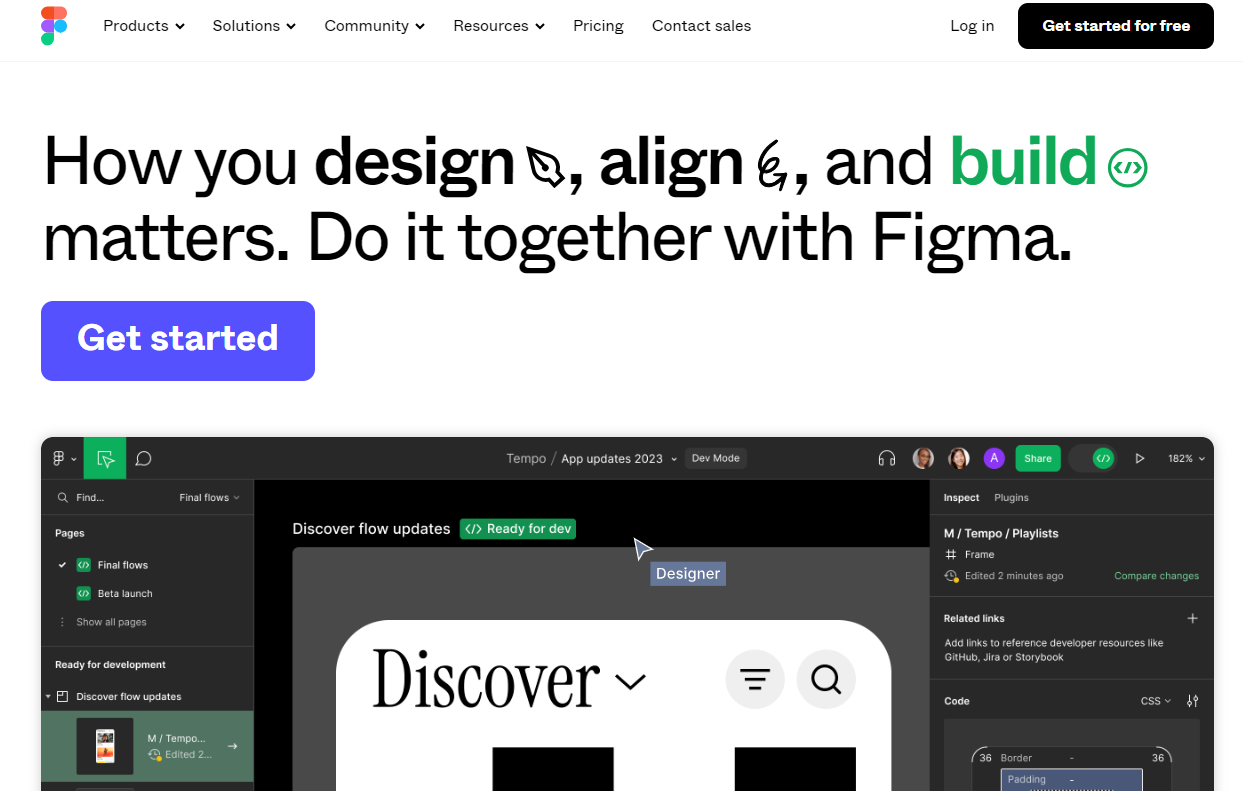
Source: Figma Official Site
Figma is a top-notch web-based UI/UX design tool that caters to both free and paid users. This software offers a range of functionalities that streamline the design process.
One of its most impressive features is its robust collaboration capabilities. Figma excels in facilitating team-based design efforts, allowing you and your whole team to work on a design together, seamlessly. Specifically, the tool’s file- and feedback-sharing features enable this level of teamwork.
Plus, Figma puts the power in your hands to create interactive prototypes that mimic how users will interact with your app.
Imagine you’re fine-tuning your iOS design, almost like you’re giving a friend a sneak peek of your app’s features. This not only helps you perfect your design concepts but also ensures your iOS app has an interface that users will love.
When pitching your idea to investors, having a polished prototype can really make a difference. Innovative tour tech startup Roamni went from a prototype to a million-dollar investment for its app development project. This was made possible despite the fact that Roamni’s founders had no background in technology at all.

Another highlight of Figma is its support for ready-made design systems. These systems allow you to build and share reusable components such as buttons and icons, helping promote consistency across your various design files.
Moreover, Figma’s abundance of online resources, including tutorials and UI kits, further solidifies its status as a go-to tool for iOS app design.
Despite this design tool’s many advantages, it has its drawbacks. Figma’s focus on design means it lacks robust coding capabilities, making it necessary to use separate tools for actual development. Additionally, while a free plan is available, certain advanced features are reserved for paying users.
Limitations aside, Figma remains a crucial tool for designing iOS app interfaces and collaborating effectively with development teams. Its user-friendly interface and burgeoning community make it a top choice for streamlining app development workflows.
Pros:
- Robust collaboration features for aligning designers and developers
- Seamless file sharing and feedback
- Creation of interactive prototypes
- Reusable components for consistency
- Abundance of online resources
Cons:
- Limited coding functionalities
- Some features are available only through paid subscriptions
#2 Adobe XD
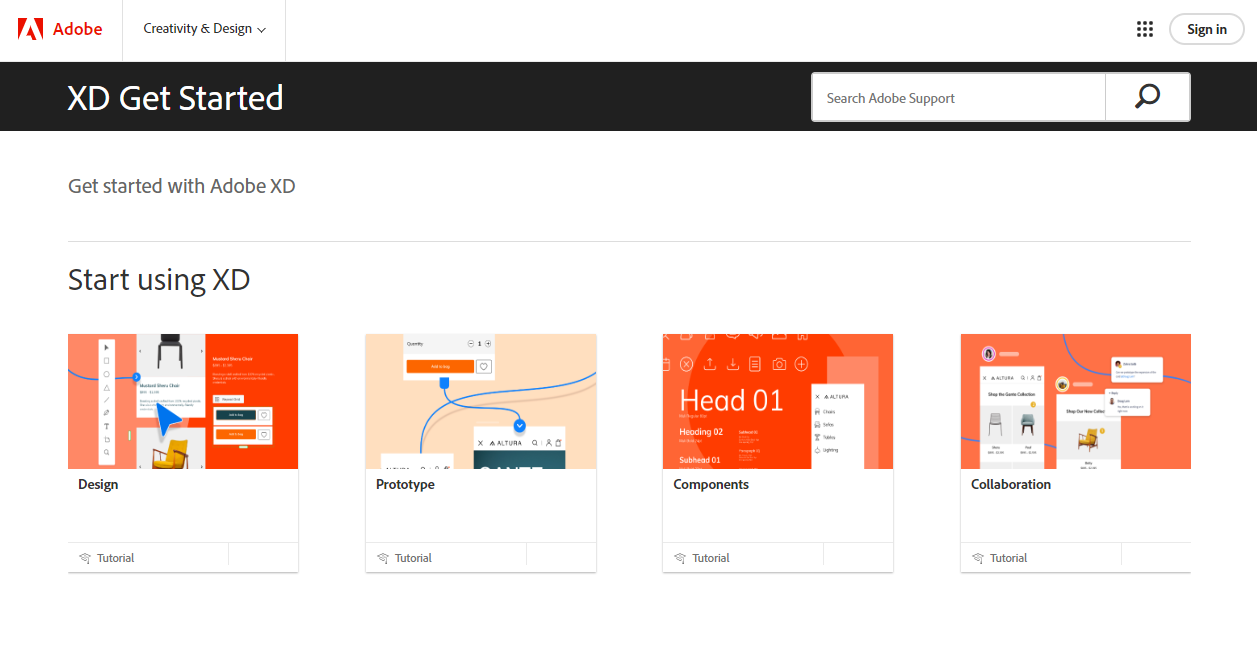
Source: Adobe Help Website
Though Adobe XD is similar to Figma in many respects, it has extra tricks up its sleeves.
For instance, XD seamlessly connects with Adobe Creative Cloud, a subscription service that provides online access to graphic design tools, video editing, UX design, and social media marketing. These tools are good for implementing app growth strategies, helping more people discover and download your iOS app after its launch.
Since an app tends to have more revenue the more users it has, XD is crucial in ensuring your app design and development project is reinforced by tools for app growth.
Aside from integration with multimedia creation tools, XD offers an enhanced prototyping feature. This iOS design software enables you to interact with your prototype using voice commands. This functionality is especially useful if you want your iOS app to have voice-activated features.
💡Pro Tip: Voice-activation functionality may not be necessary for the first version of your iOS app. Features like these are usually reserved after you develop your minimum viable product, which is essentially your iOS app with just enough basic features for initial market traction. Once your app gains popularity, you can consider adding extra bells and whistles.
Aside from voice-command functionality, XD can generate product specifications and related assets. Since product specs are a crucial part of the mobile app design process, they reduce communication barriers between your designers and developers, potentially shortening the app development cycle and reducing project costs.
Despite its strengths, XD has some limitations. Like Figma, it lacks built-in coding functionalities, requiring developers to translate designs into code manually. Moreover, access to the full suite of XD features requires an Adobe Creative Cloud subscription.
While not specifically tailored for iOS app development, XD enjoys industry recognition among UX design practitioners. Tech research firms like Gartner have mostly praised the tool.
Drawbacks aside, Adobe XD is a notable piece of software that best combines app growth tools with enhanced iOS app design.
Pros:
- Voice-command functionality for prototypes
- Creation of product specifications for better designer-developer alignment
- Industry recognition from the likes of Gartner
Cons:
- Absence of built-in coding functionalities
- Adobe Creative Cloud subscription required for full access
Best Integrated Development Environments (IDEs)
An Integrated Development Environment (IDE) is essentially a combination of tools that enable you to create, compile, and test code. If an iOS app were a sports car, an IDE would be like a factory and a test track where the automobile would be assembled and then driven to its limits to ensure quality.
Here are some of the best IDEs you can consider using to build and test your iOS application:
#3 Xcode
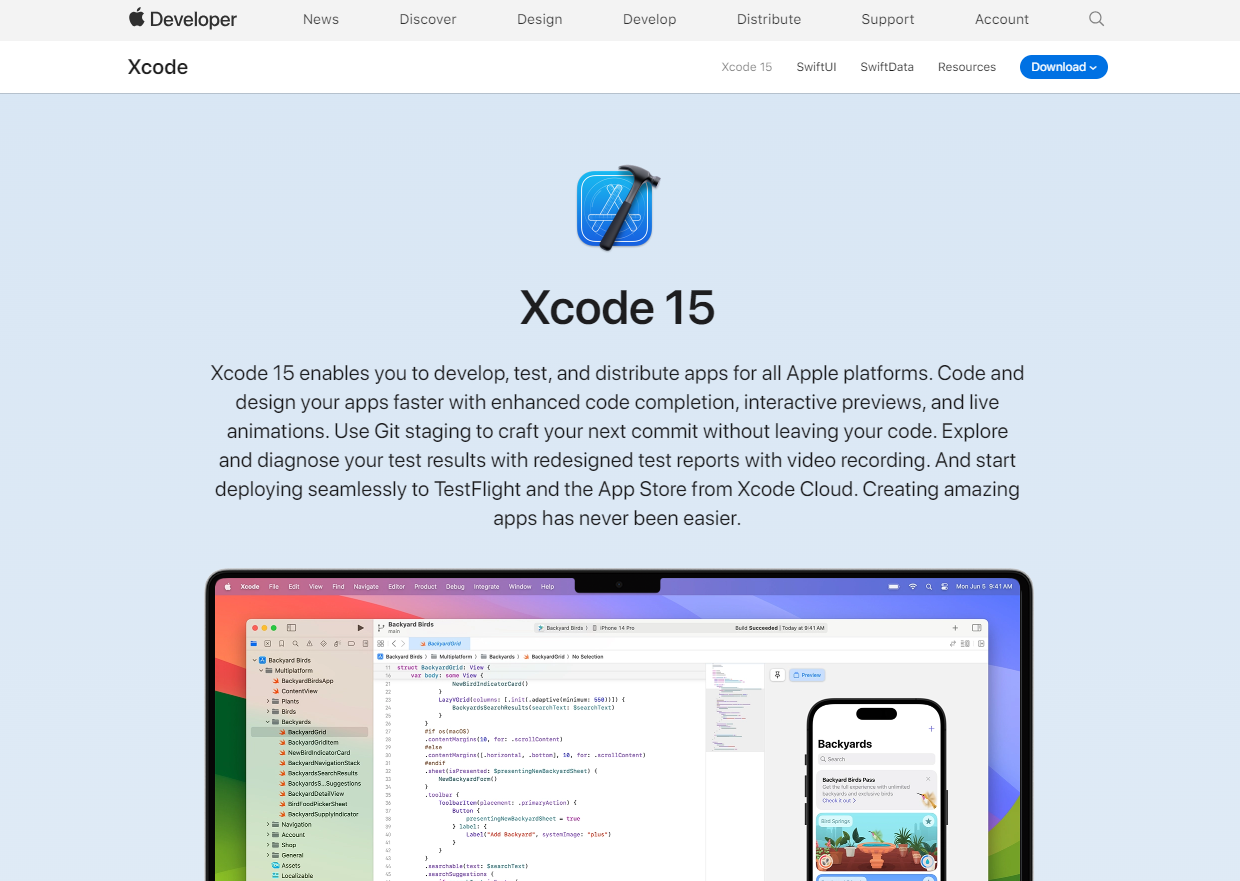
Source: Apple Developer Website
Xcode is the official IDE for Apple’s entire suite of platforms—from mobile devices to smart TVs.
At its core, Xcode streamlines the entire development lifecycle. The tool covers various aspects of the development process, like project management, code editing, visual UI creation, debugging, performance analysis, and App Store integration.
In short, it’s a one-stop shop for crafting and publishing iOS apps.
Xcode also has the unique capability to synchronize app design and code editing. An Xcode toolkit called SwiftUI automatically edits your iOS app’s underlying code based on the design changes you make in your app’s interface. It’s like changing the look and materials of your house simply by editing its blueprint.
Aside from SwiftUI, Xcode has robust debugging tools that empower you to identify and rectify issues swiftly. Through these tools, you can bolster the quality and reliability of your iOS app.
Another tool within Xcode is the Integrated Simulator, which enables you to exhaustively test your iOS application across multiple virtual devices.
Xcode also demonstrates some Figma-like collaborative brilliance. For instance, it seamlessly integrates with popular version control systems like Git, enabling you and your development team to quickly access older versions of your app’s underlying code.
Despite all these advantages, Xcode still has some challenges. Its main limitation is its relatively steep learning curve due to the tool’s rich feature set.
Nevertheless, its unparalleled features and seamless Apple integration make Xcode the tool of choice for hardcore iOS app developers.
Pros:
- End-to-end coverage of the iOS app development process
- Design and code synchronization
- Github integration for code management and collaboration
Con:
- Relatively steep learning curve
#4 Visual Studio Code

Source: Visual Studio Code Official Website
Visual Studio Code (VS Code) is like Xcode but with greater flexibility and enhanced collaborative features.
On the hardware side, you can use VS Code even on non-Apple platforms like Windows and Linux. This is in contrast to Xcode’s exclusivity for the Apple ecosystem. VS Code’s platform flexibility means you or your developers don’t have to buy a Mac or an iMac to build your iOS app, saving you from high equipment costs.
Software-wise, VS Code allows you to beyond the Swift programming language. This flexibility enables you to build not just iOS apps but also applications for other platforms.
💡Pro Tip: Developing an app for multiple platforms tends to be cheaper than developing one native app for Android app and another for iOS. But choosing the right app development method goes beyond cost considerations. If you want to learn more about this, check out our article on hybrid vs native apps.
Another characteristic that shows VS Code’s flexibility is its expansive set of extensions. This diversity of extensions gives you access to a plethora of tools ranging from debugging aids to seamless integration with complementary software.
Aside from flexibility, VS Code takes collaboration to a whole new level with Live Share. This feature allows you to collaborate more easily with another person on the same code without the need for code synchronization or complex configurations.
Efficient collaboration through Live Share can minimize mistakes and cut app development timelines, which can lead to reduced app development expenses.
However, adopting VS Code for iOS app development isn’t always easy. Its lack of out-of-the-box features requires additional setup and reliance on extensions, making VS Code slightly inferior to Xcode’s more streamlined developer experience.
Ultimately, while Xcode is Apple’s official IDE for developing iOS apps, Visual Studio Code offers a compelling alternative for developers seeking flexibility and customization. While not a silver bullet, VS Code’s potential to reshape workflows and empower developers makes it a significant tool to consider for iOS app development.
Pros:
- Platform and coding flexibility
- Multi-extension compatibility
- Time and cost savings due to enhanced collaborative features
Con:
- Less developer-friendly interface compared to Xcode
Best dependency management software
Whether you’re using an all-in-one IDE or multiple coding and testing tools, you must check whether your development software is good at dependency management.
Sometimes, when programming your iOS app, you must incorporate a standalone component called a dependency to enhance its functionality.
For instance, if you’re planning to create a social media app with top-notch privacy features, you may need to use an external package created by someone else to encrypt your application’s messages. To ensure this newly added component doesn’t disrupt the functioning of the other parts of your social app, your iOS development tool must manage dependencies well.
Here are some of the best tools you can use for dependency management when crafting an iOS app:
#5 CocoaPods

Source: CocoaPods Official Website
CocoaPods is a good dependency manager for Swift and Objective-C projects in iOS and macOS development.
This dependency management tool has over 100,000 libraries, aptly called “pods.” This amount of libraries is an impressive figure in the industry.
CocoaPods also boasts seamless version control, as it allows you to specify library versions in a Podfile. This level of version specification ensures team-wide consistency and maximizes compatibility among your iOS app’s components.
The tool also enables single-command updates for many projects, ensuring all the components of your iOS app are in sync despite modifications to certain elements, such as certain libraries.
But for all its good features, CocoaPods has its share of limitations.
For one, navigating the initial setup can pose a steep learning curve for newcomers. Furthermore, the tool’s reliance on external code means that you are at the mercy of pod maintainers, leaving you vulnerable to issues stemming from outdated or abandoned libraries.
While the tool has some challenges, CocoaPods’ overarching benefits make it a leading tool for developers seeking to streamline their dependency workflow and speed up the launch of their apps.
Pros:
- Extensive library collection
- Seamless version control
- Single-command updates for project synchronization
Cons:
- Potentially steep learning curve during initial setup
- Possible issues with outdated or abandoned libraries
#6 Swift Package Manager
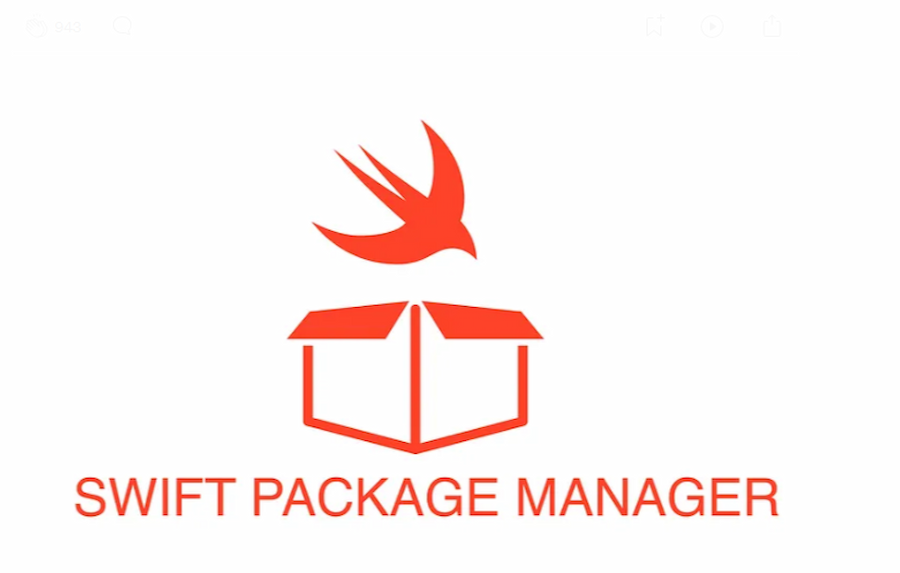
Source: Talkdesk Engineering
As an Xcode-integrated dependency manager, Swift Package Manager (SPM) enjoys a bona fide status in the Apple development ecosystem. But the tool’s excellence does not end here.
One of SPM’s standout features is its effortless dependency management. By automating the downloading, compiling, and linking of external code libraries, SPM streamlines the development process, saving you time and effort.
Moreover, the dependency management tool ensures you use the correct dependencies by specifying version compatibility in the package manifest.
SPM’s compatibility with open-source projects also amplifies its appeal. It lets you seamlessly integrate with the vibrant open-source community, facilitating easy code sharing and contribution. This open ethos fosters innovation and collaboration, enriching your iOS development experience.
However, SPM does have its drawbacks.
While it excels in developing apps for multiple iOS devices, its support for other platforms like watchOS may still be maturing. Additionally, some developers note limitations in managing complex dependencies.
Despite its disadvantages, SPM’s official endorsement by Apple and its more streamlined process make it a powerful tool for managing the dependencies of iOS app development projects.
Pros:
- Apple-approved integration with the Xcode IDE
- Streamlined dependency management that shortens project timelines
- Excellent systems for maximizing the correct usage of dependencies
- Compatibility with open-source projects
Cons:
- Lack of support for some iOS platforms
- Potential challenges in managing complex dependencies
Best backend cloud services
When building a typical iOS app, you need to consider integrating it with online services to ensure its optimum functionality and cost-effective scalability. In other words, online services help you accommodate more satisfied users for your iOS app without spending too much time and money on equipment and software.
Cloud services are a subset of online services that let apps store, process, and transmit data through physically remote computers called servers. These servers cost a lot of money. Since cloud services essentially let you “rent” instead of buy servers, you can save precious resources as you empower your iOS app users to communicate or share content with each other.
Since cloud services form part of the “engine” that powers your iOS app, they are at the “back end” of your application. To learn the difference between the “back end” and “front end” of an app, check out our article on frontend vs. backend development.
Though the following tools also assist in other stages of iOS app development, they are especially excellent in providing backend cloud services.
#7 AWS Amplify (by Amazon Web Services)
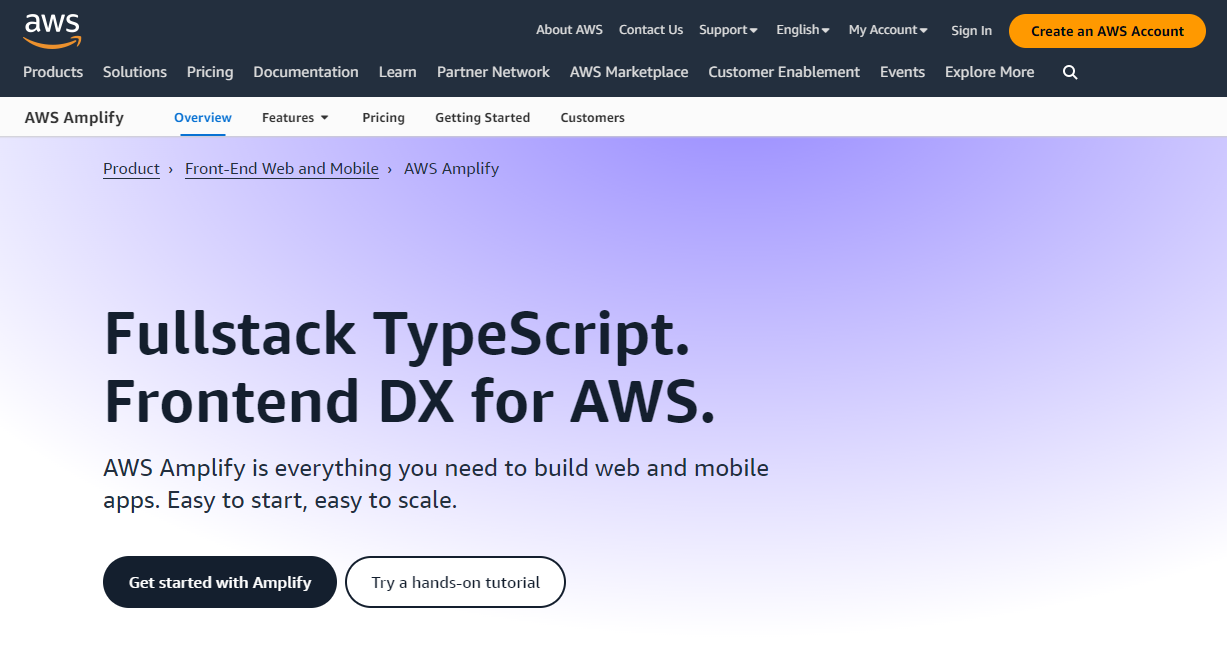
Source: AWS Official Website
Though AWS Amplify is a full-stack tool that addresses both the front- and back-end aspects of iOS app development, the flexibility of its cloud services is worth focusing on.
One of Amplify’s standout features is its dedication to streamlining backend integration. Its user-friendly interface empowers you to implement backend functionalities like authentication, data storage, and file storage more easily. Key to this user-friendliness is Amplify’s declarative programming system, which allows you to integrate your iOS app with Amplify’s cloud services while spending relatively less time and effort.
By shouldering the burden of backend interactions, Amplify liberates you from the nitty-gritty of coding backend processes or purchasing servers and enables you to focus on crafting exceptional user experiences.
Amplify is also highly suitable if you’re developing a highly customized iOS app. It empowers you to connect your iOS app with a wide variety of backend cloud services offered by AWS, such as:
- Computation
- Storage
- Information databases
- Machine learning
- Data lakes and analytics
Despite Amplify’s numerous solutions, it has one major drawback.
Its customizability is both a strength and a weakness. Though Amplify allows seamless integration with many backend services, mastering the tool and navigating its features may prove difficult, especially if you or your developers don’t have prior experience with AWS.
Though not perfect, AWS Amplify is still a powerful tool, especially if feature customization is a high priority for your iOS app development project.
Pros:
- Extensive app development features
- High degree of app customizability
Con:
- Potentially steep learning curve
#8 Firebase (by Google)

Source: Firebase Official Website
Like AWS Amplify, Firebase is a full-stack tool that offers backend cloud services. However, Firebase is a straightforward alternative that focuses more on ease of use and leveraging Google’s industry reputation and technical stability.
Firebase’s Backend as a Service (BaaS) is fully managed by the tech giant Google. Therefore, its BaaS frees you from the difficulties of backend development and implementation, empowering you to concentrate on refining the app’s user experience and functionality. Among the many backend functions that Google assumes through Firebase include:
- Computation
- Information databases
- Machine learning
- Data analytics
And true to Google’s passion for protecting users, Firebase has a feature called Cloud Functions. It prevents your app’s users from reverse engineering the iOS app’s code. In other words, Firebase prevents unauthorized persons from learning how your app works, ensuring that your technology won’t be plagiarized.
If you want to learn other ways to ensure no one else copies and benefits from your iOS app, check out our article on patenting an app idea.
Going back to Firebase, this tool may have many of the features that Amplify AWS has. But Firebase is relatively easy to use.
Despite the many strengths of Firebase, it has one main chink in its armor. Though the tool offers extensive management of cloud services, it may not suit your needs if you want a highly customized iOS app.
In summary, while Firebase may not be without its imperfections, its association with Google and its usability make the tool a convenient and credible option for developing relatively simple iOS apps.
Pros:
- Extensive app development features
- Protection of app code secures developers’ app idea
- Credibility through association with Google
- Extensive suite of vital back-end cloud computing services
Con:
- Less flexible and customizable than close alternatives
💡Pro Tip: When it comes to backend cloud services, Amplify and Firebase have ease of use and flexibility tradeoffs. But if you desire flexibility in customizing your iOS app without worrying about steep learning curves, you can explore availing of custom app development services.
Best pre-launch testing tools
In developing mobile and web apps for various entrepreneurs and organizations, our team at Appetiser subject the applications to rigorous testing before launching them in the app stores. Crucial to this pre-launch testing is a sample set of users who will provide feedback on the said apps.
The input that these users provide during beta testing ensures that our clients get apps with the highest probability of market success.
We highly recommend the following pre-launch testing tools to ensure your iOS app closely matches market needs and wants:
#9 TestFlight (by Apple)
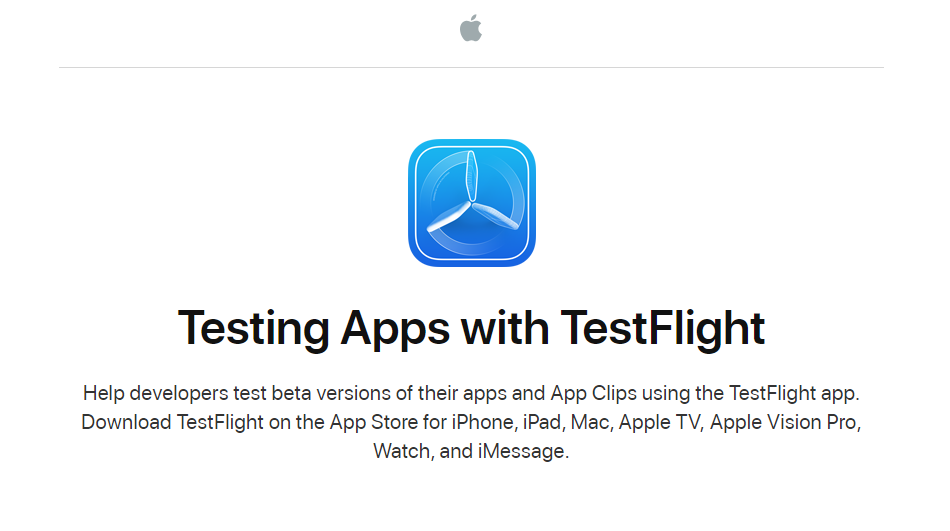
Source: TestFlight Official Website
TestFlight is Apple’s official, user-friendly, and highly specialized testing tool for iOS applications.
Since this tool was created by Apple, it offers a seamless pathway for beta testing across multiple Apple platforms, including iOS, iPadOS, macOS, tvOS, watchOS, and iMessage.
TestFlight also has systems in place to ensure smooth collaboration between you and your iOS app’s testers. For instance, the tool facilitates the twin tasks of inviting your testers and installing your beta app for their usage. Moreover, TestFlight ensures that testers are always up-to-date with the latest versions of your iOS app through automatic updates.
Another standout feature of TestFlight is its ability to perform concurrent testing. This means you can test different iOS apps or multiple versions of the same application anytime. What this does is it shortens your testing and build timeline, allowing you to reduce app development expenses and enjoy the speed-to-market advantage over competitors.
Despite TestFlight’s excellent features, it’s not without limitations.
The 100-tester-per-app limit may prove restrictive for large-scale projects. Another potential point of inconvenience is that the tool may take down your app after 90 days of uploading it.
Drawbacks aside, TestFlight is still a crucial tool for testing iOS apps due mainly to its intuitive interface, collaboration-enhancing features, and seamless integration within the Apple ecosystem.
Pros:
- Support for testing on multiple Apple devices
- Collaboration-oriented and easy-to-use features
- Accommodation for testing multiple apps at the same time
Cons:
- Tester limit might compromise large-scale projects
- Upload expiration period might disrupt test schedules
#10 Fastlane
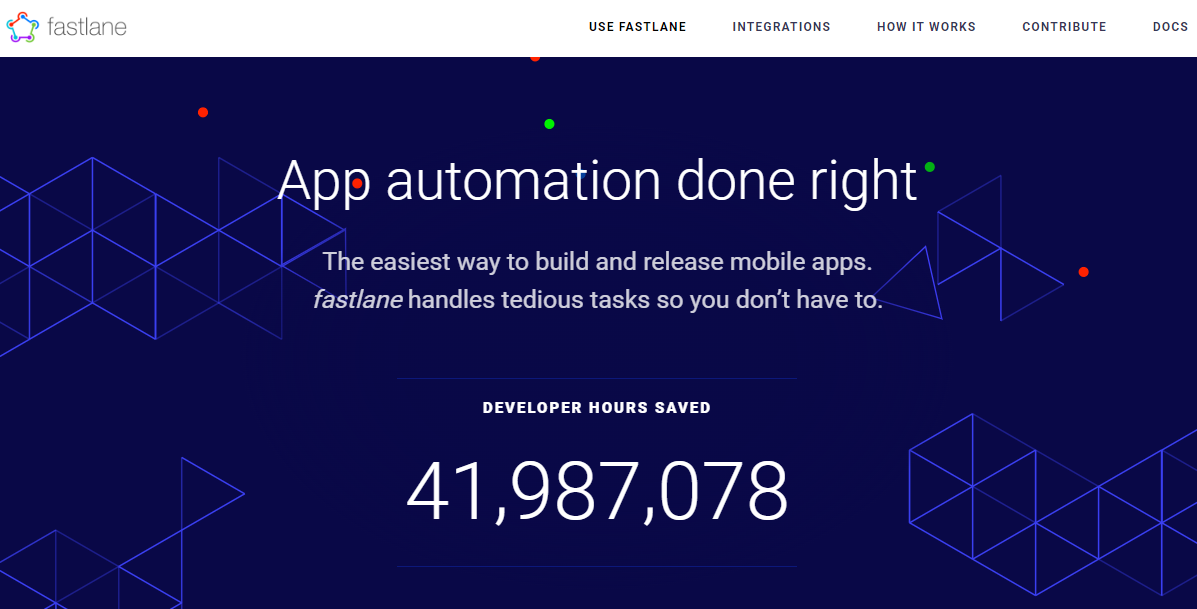
Source: Fastlane Official Website
In one sentence, Fastlane is TestFlight’s more flexible counterpart.
First, unlike TestFlight, Fastlane allows you to test both Android and iOS apps. So, if you want to leverage native app development to cover most of the world’s smartphones, Fastlane is a cost-effective tool for the testing phase of your project.
Fastlane also exhibits its flexibility by facilitating the different phases of the app development process. From building and testing to pivotal stages such as signing and deployment to app stores, Fastlane makes these tasks less challenging through seamless and automated processes.
This is how Fastlane leverages automation to make app development easier:
Assume you are using Xcode to develop your iOS app. Once you’re done programming the first version of your app, you can integrate Fastlane into Xcode so it can automatically send your app to sample users and receive feedback from them.
But despite Fastlane’s feature diversity and automation capabilities, it has some shortcomings.
For one, a special understanding of the Ruby programming language is essential to maximize the tool’s automation potential. A high level of experience may also be necessary, especially for more complex iOS development projects.
But if you or your iOS developers have the right skill set, Fastlane is a powerful tool for saving time, energy, and resources when conducting app testing and other related tasks.
Pros:
- Testing capabilities for multiple mobile operating systems
- Automation of app testing and related tasks
Con:
- Skillset requirements might pose barriers for some developers
What’s better than iOS app development tools?
Each of the iOS app development tools mentioned here has its own specialties. When used together, they comprise a “Swiss Army knife” for clearing various iOS development obstacles.
But tools are only as powerful as the people who use them.
And assuming you have excellent programming skills, you need to either study or hire people to cover all the bases required for the successful growth of your iOS app.
But there is an alternative to either studying or hiring people. Have you tried exploring outsourcing your app development project to an app agency?
Outsourcing offers the twin advantage of eliminating the need to study extra courses or programs while ensuring you only pay for app experts when you need them.
Though there are many app agencies available, why not save time and book a free consultation with us?
By contacting us, you will learn from our friendly experts how to leverage our top-notch tools, designers, developers, and product strategists to ensure you get the most value out of every cent and second invested in iOS app development.
Your iOS app success story awaits!
People also ask
1. Which iOS app development tools make building apps easier?
Tools like Xcode and Swift handle the core work—organizing code, catching errors, and keeping the app running smoothly. Design tools such as Figma or Sketch shape the interface so it feels effortless. Together, these tools do the heavy lifting that users never notice.
2. Can design tools actually make or break an app?
Yes. Users judge within seven seconds, investors within seven minutes. Sketch and Figma don’t just make pretty screens; they craft trust, credibility, and, if you’re lucky, funding. Vello raised $600k because the first clickable prototype felt like magic.
3. Why bother testing an iOS app before launch?
Because real users don’t care about your vision. They care if it crashes. Early testers find the bugs before users do.
4. Do backend tools matter if the app looks amazing?
Absolutely. A shiny front end means nothing if the app freezes when you try to log in. The behind-the-scenes tech keeps things running—handling logins, saving data, and updating in real time—so what feels smooth on the surface is backed by serious muscle underneath.
5. What’s best for iOS apps? Swift or Objective-C?
Swift is Apple’s golden child: faster, cleaner, and built for the future. Objective-C is older, clunkier, and sticking around mostly out of habit. The language you pick isn’t just code—it’s choosing whether your app grows with ease or drags you down later.
6. Do iOS app development tools actually help sell your app?
Yes. Good tools = better app = happier users = better reviews. The App Store isn’t just a marketplace. It’s a scrutiny chamber. Apps built with the right toolkit survive longer, look better, and get more downloads.
7. What makes iOS app development challenging?
Because Apple likes to keep developers guessing. One minute your app works perfectly, the next—an OS update or a new device turns everything sideways. Even the App Store can change the rules without warning. The trick isn’t memorizing every detail; it’s learning to expect the unexpected and building apps that survive it.

Jesus Carmelo Arguelles, aka Mel, is a Content Marketing Specialist by profession. Though he holds a bachelor’s degree in business administration, he also took courses in fields like computer troubleshooting and data analytics. He also has a wealth of experience in content writing, marketing, education, and customer support.


